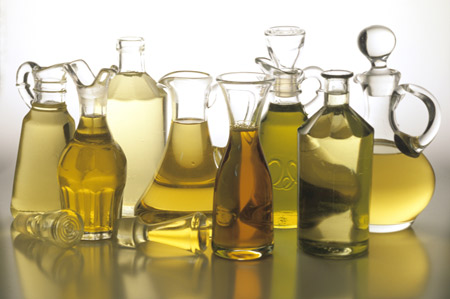Palm Oil May Advance to Highest Since 2008 as Harvest Slows
Category: Oilseeds
 (Bloomberg) – Palm oil may climb to 4,000 ringgit ($1,277) by the end of the first half, the highest since 2008, as output slows in Indonesia and Malaysia amid “buoyant” demand, said Dorab Mistry, director of Godrej International Ltd.
(Bloomberg) – Palm oil may climb to 4,000 ringgit ($1,277) by the end of the first half, the highest since 2008, as output slows in Indonesia and Malaysia amid “buoyant” demand, said Dorab Mistry, director of Godrej International Ltd.
Futures in Malaysia may advance to 3,300 ringgit a metric ton in January and “gradually” increase to 4,000 ringgit, Mistry said, keeping a forecast made in July. January-delivery futures gained 1.2 percent to 3,173 ringgit a ton at the midday trading break on the Malaysia Derivatives Exchange. Futures have declined 16 percent this year, snapping a two-year gain.
Rising prices may lift world food costs that the United Nations predicts will stay at historically high levels this year, increasing pressure on central banks to raise interest rates. Commodities fell to a 10-month low on Oct. 4 on concern that a deepening European debt crisis may slow global economic growth and curb demand for raw materials.
“With growth in crude palm oil production decelerating and demand remaining buoyant, prices must rise,” said Mistry, who in September correctly predicted the tropical oil would drop to 2,800 ringgit last month. Demand for vegetable oils is expected to grow by 6 million tons in the 2011-2012 marketing year, outpacing global supply, Mistry said yesterday at the China International Oils and Oilseeds conference in Guangzhou.
Mistry cut his estimates for this year’s palm oil production for Malaysia to 18.8 million tons from 19 million tons and Indonesia’s output to 25.2 million tons from 25.5 million tons.
Slower Harvesting
Global output growth for 2011 may be 5.5 million tons from an earlier forecast of 6 million tons, he said. Production may increase by about 2 million tons in 2012, he said.
“In the last few weeks, the pace of increase has been decelerating, particularly in the case of older tall trees,” he said. “Add to that, the weather in Malaysia and in Indonesia has turned far too wet and this leads to flooding, slower harvesting and other related problems.”
Production typically peaks from July to October and tapers off during the rainy season from November onwards. Forecast models suggest the La Nina event is likely to peak towards the end of 2011, and persist into early 2012, Australia’s Bureau of Meteorology said Nov. 9. La Nina, a cooling of the Pacific Ocean, can increase rainfall in Malaysia and Indonesia and cause drier weather in Latin America and southern U.S.
Stockpile Drawdown
“From November this year, we shall see a drawdown in palm oil stocks,” Mistry said. “It will become a function of price and of spreads to keep stocks in the second half of 2012 at a workable level and to prevent them from falling to a dangerously low level. As stocks decline, the new export tax structure in Indonesia will magnify those changes and create a disproportionate bullish effect on prices.”
Indonesia, the largest grower, cut the maximum tax on refined, bleached and deodorized palm olein to 13 percent from 25 percent efffective Oct. 1, while the tariff on crude palm oil was lowered to a maximum of 22.5 percent from 25 percent.
China, the world’s biggest user of cooking oils, may import larger amounts of oilseeds, vegetable oils and grains, helped by the stronger yuan, to replenish state reserves, he said.
“China will soon become the world’s largest importer of food,” he said. “Our oilseed complex is important to China and China is even more critical to price behavior with each passing year. I expect some recovery in soybean imports and crushing in China in 2012.”
Biodiesel
U.S. biodiesel production is expected to pick up “strongly” in the second half of 2012 and Brazil and Argentina, the biggest soybean exporters after the U.S., may increase their biodiesel mandates next year, which will be positive for soybean oil prices, Mistry said. Soybean oil futures in Chicago may trade between 65 and 70 cents a pound by June 2012, he said. December-delivery soybean oil advanced at much as 1.1 percent to 51.54 cents today.
Sunflower oil will stay at parity with soybean oil for most of this time and then move to a small premium, while rapeseed oil in Europe will remain as a premium oil, according to Mistry.
The strength in rapeseed oil prices was supported by the strong demand for biodiesel in Europe and the limited supply due to lower crops in 2011, a 2 percent biodiesel mandate in Canada, exports to the U.S., and the lower rapeseed crop in China.
“The threat of contagion can scuttle this bullish forecast,” Mistry said. “If equities tank, for any reason, then all commodity prices will also fall and will take vegetable oil, oilseeds and meal down as well.”
To contact the reporter on this story: Ranjeetha Pakiam in Kuala Lumpur at rpakiam@bloomberg.net
To contact the editor responsible for this story: Richard Dobson at rdobson4@bloomberg.net




